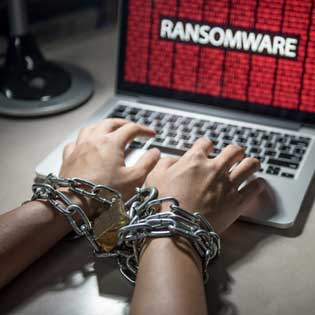How Backup and Recovery Services Could Protect Hospitals from Cyber Hacks
October 3, 2017

October 3, 2017
Perhaps one of the biggest threats to medical practices, hospitals, and health systems these days has been the flurry of cyber attacks that use ransomware as the vehicle for a hacker take over. Earlier this year, 48 U.K. hospitals and affiliated facilities were shut down due to a ransomware attack. The incidents of U.S. hospitals experiencing cyber breach from ransomware and other malware attacks are increasing.
In the case of ransomware, there is one key procedure that can help protect patient data and vulnerable equipment from a breach. We’re talking about the necessary practice of backup and recovery services. This article looks more closely at the phenomenon of ransomware and how backup and recovery service can help your organization recover quickly and fully from this intrusion.
The Rise and Spread of Ransomware
As recently as June 2017, a U.S. health system was reportedly hit by ransomware. Heritage Valley Health System reported problems at two of its hospitals as a computer virus caused system outages and patient disruption.
Ransomware or other malware can affect critical infrastructures at hospitals, from patient records to ventilators and MRIs. When legacy computer operating systems are not kept up-to-date, they become vulnerable to a cyber attack.
But what is ransomware and how does it work?
Ransomware has been around for years but made the news most recently in 2017 due to the sheer massive scale of a virus called WannaCry, which hit computers in 150 countries. But this FBI bulletin from 2015 shows these cyber terrorist techniques are nothing new; there were nearly 1,000 ransomware complaints to the agency between 2014 and 2015.
Ransomware is a type of computer malware or malicious virus, that is typically transmitted through a file attached to a simple email message. When an employee working in a hospital IT network inadvertently opens the link or file attachment, a virus is unleashed that travels through the system architecture. Ransomware works by encrypting files so that users cannot open them. A message is displayed on screens stating the files cannot be opened until a ransom is paid. The ransom is typically paid in bitcoin, which is a kind of electronic currency. Typically the fine ranges from $300 to $600.
Ransomware viruses come with slight variants that have names like Cryptolocker, Locky, Cryptolocker, and WannaCry, but they all do the same thing.
This can happen to any business or any individual and the lock down can affect any electronic device from your cell phone to a hospital’s EMR. Interestingly, Security Ledger reports some FBI officials suggest just paying the fine.
It’s important to note that paying the fine doesn’t always unlock your computer. However, IBM Security did a study that says nearly 70% of all ransomware victims paid the fine, with 50% of those polled paying more than $10,000, and 20% paying more than $40,000.
Beyond teaching your employees safe email practices and improving your anti-virus software, the most important step you can take to protect your organization from the risk of ransomware threats is to develop backup and recovery services.
Get a free assessment of your hospital’s ability to recover from a ransomware attack.
Backup and Recovery Services for Healthcare Facilities
Backup and recovery services are a critical component of any hospital or health system technology strategy. Yet it appears that medical facilities have been slow to develop these services; Becker’s Health IT & CIO Review says 55% of healthcare technologists express low confidence in their ability to recover all healthcare data in the event of a crisis.
That’s probably because hospital systems are disparate and characterized by pieced-together interoperability. While HIPAA requires that EMRs receive daily backups, the patchwork quilt of digital systems in a hospital setting is vast, so the likelihood of a misstep is fairly high.
Yet Tech Target reports that backups remain the most effective way to recover locked data during a ransomware threat. Capturing all the data regularly via backups can be challenging. Becker’s suggests that any recovery service includes wide scale adoption by all members of the facility, along with periodic testing to improve the response.
Backup and recovery is truly the only way your organization can avoid the disruption of a malware attack. Managed service providers that specialize in backup and recovery can help health systems and hospitals effectively supplement their existing IT teams to ensure data security. Contact TOSS C3 to find out more.
Get the protection your organization needs, request a quote today.
.png)

Subscribe now and stay up to date with News, Tips, Events, Cybersecurity, Cloud and Data Compliance.